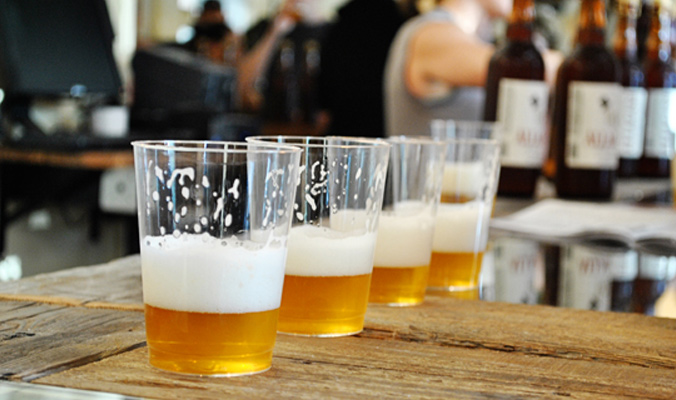
Some things just go together, like dive bars and ski bums, spring days and one-piece ski suits. We’ve applied that philosophy to this year’s Beer Guide, pairing 18 craft beers from around the country with how best to enjoy them—whether that’s hydrating throughout the day or being the guy who takes an Uber home from the tailgate. We’ve considered flavor, ABV, packability and skintrack cred to present the hoppiest, headiest and most satisfying beers—and how to fully drink them up.
The first written record of pale ales popped up in a Calcutta newspaper in the early 1700s. Fast forward a few centuries, and pale ales can be broken down into several categories. But what’s the difference?

[Photo] Courtesy Elisa Self
American Pale Ale: In the ’80s, the U.S. created a louder version of the English IPA: including higher ABV, American-grown hops—and more of them—to create a piney, more bitter alternative.
West Coast IPA: Most U.S. hops are grown in the west, which breweries in that region take advantage of, producing hoppier IPAs that result in a more bitter outcome than their East-Coast counterparts.
East Coast IPA: Geography also plays into East-Coast breweries’ IPAs—they stick closer to the traditional, English version of the drink, favoring malty sweetness over strong, bitter tastes.
Double IPA: Like an IPA, but with more hops and malt, leading to a higher ABV. The complexity of the beer doesn’t mean bitter, necessarily; the high malt levels offset the hops and create a smoother taste than most IPAs.










Related posts:
2016 Beer Guide: Mountain West
2016 Beer Guide: Editors' Choice
Hop to It: Your favorite flower, explained
Silverton Heli Expansion Approved: Opposition Promises Appeal